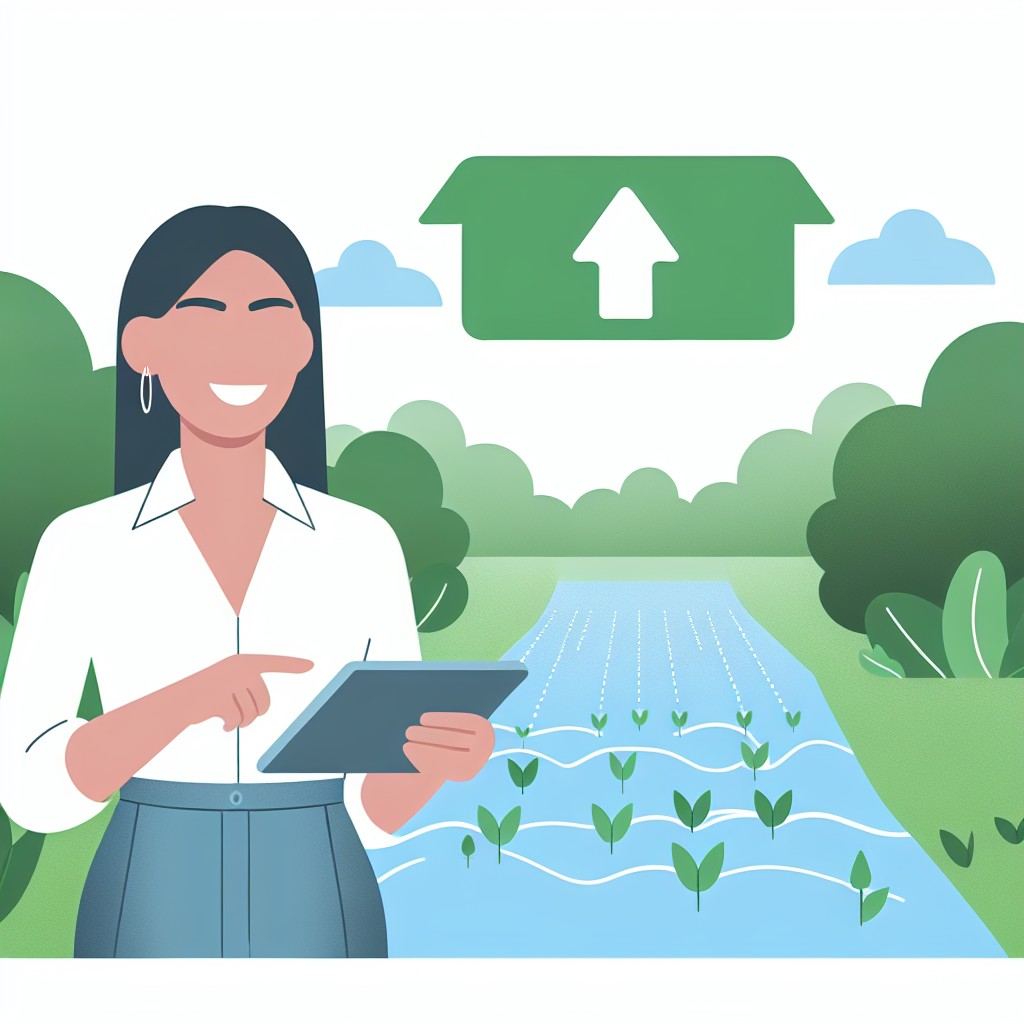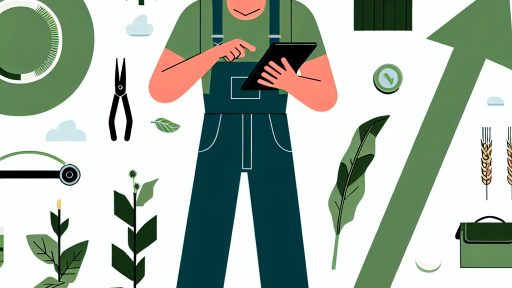Introduction to Sustainable Irrigation and Its Importance for Aquatic Ecosystems
Defining Sustainable Irrigation
Sustainable irrigation uses water efficiently to support crop growth.
It minimizes waste and preserves natural water sources.
Farmers and water managers apply sustainable methods to protect ecosystems.
Furthermore, sustainable irrigation balances agricultural needs with environmental health.
Impact of Irrigation on Aquatic Ecosystems
Irrigation directly affects nearby rivers, lakes, and wetlands.
Excessive water withdrawal can lower water levels and harm aquatic life.
Additionally, runoff from fields may carry harmful chemicals to water bodies.
Such pollution disrupts aquatic habitats and biodiversity.
Why Sustainable Irrigation Matters
Sustainable irrigation helps maintain clean, healthy water ecosystems.
It supports the survival of fish, plants, and other aquatic species.
Moreover, it ensures water availability for future agricultural use.
Adopting sustainable practices benefits both farmers and the environment.
- Optimize water use to prevent depletion of freshwater resources.
- Reduce soil erosion and chemical runoff into aquatic systems.
- Maintain natural flow regimes that support aquatic biodiversity.
- Promote long-term resilience of water supplies and ecosystems.
Collaboration for Conservation
Farmers, scientists, and policymakers must work together to promote sustainability.
Innovative irrigation technologies play a crucial role in this effort.
Furthermore, education and incentives encourage widespread adoption.
Transform Your Agribusiness
Unlock your farm's potential with expert advice tailored to your needs. Get actionable steps that drive real results.
Get StartedUltimately, such collaboration ensures thriving aquatic ecosystems and productive agriculture.
Overview of Aquatic Ecosystems and Their Role in Biodiversity
Defining Aquatic Ecosystems
Aquatic ecosystems include freshwater and marine environments.
They range from rivers and lakes to oceans and wetlands.
These ecosystems provide habitat to countless plant and animal species.
Moreover, they support the survival of many organisms essential to the food web.
Importance of Aquatic Ecosystems to Biodiversity
Aquatic ecosystems host a significant portion of the Earth’s biodiversity.
They provide breeding, feeding, and nursery grounds for diverse species.
Consequently, they maintain genetic diversity crucial for ecosystem resilience.
Additionally, aquatic habitats contribute to global biogeochemical cycles.
Ecosystem Services Provided by Aquatic Environments
Aquatic ecosystems produce clean water through natural filtration processes.
They help regulate climate by storing carbon and moderating temperatures.
Furthermore, they offer recreational and economic benefits to human communities.
Healthy aquatic ecosystems also support fisheries that millions depend on for food.
Threats Facing Aquatic Ecosystems
Human activities such as pollution and over-extraction threaten these ecosystems.
Climate change alters water temperatures and disrupts species habitats.
Habitat destruction reduces biodiversity and weakens ecosystem functions.
Therefore, preserving aquatic ecosystems is critical for sustaining biodiversity.
Current Irrigation Practices and Their Impact on Water Resources
Overview of Common Irrigation Methods
Farmers widely use surface irrigation due to its simplicity and low initial costs.
However, surface irrigation often leads to significant water loss through evaporation and runoff.
Sprinkler systems provide better water distribution but require more energy and maintenance.
Drip irrigation delivers water directly to plant roots, increasing efficiency remarkably.
Despite its efficiency, drip irrigation adoption remains limited in some regions.
Traditional flood irrigation still dominates in many agricultural areas worldwide.
Water Consumption and Waste
Irrigation accounts for nearly 70% of global freshwater withdrawals.
Showcase Your Farming Business
Publish your professional farming services profile on our blog for a one-time fee of $200 and reach a dedicated audience of farmers and agribusiness owners.
Publish Your ProfileExcessive water use reduces availability for other essential needs and ecosystems.
Moreover, inefficient irrigation causes soil salinization and nutrient leaching.
Consequently, water quality deteriorates, impacting aquatic life adversely.
Leaked irrigation systems can waste substantial water volumes if poorly maintained.
Effects on Aquatic Ecosystems
Over-extraction of water for irrigation reduces river flows and lake levels.
Lower water levels increase water temperature and decrease dissolved oxygen.
These changes threaten fish populations and disrupt aquatic biodiversity.
Runoff from irrigated fields carries fertilizers and pesticides into water bodies.
Such pollution causes eutrophication, algal blooms, and fish kills in aquatic habitats.
Regional Impacts and Case Examples
The Colorado River Basin faces severe water shortages due to heavy irrigation withdrawals.
Similarly, the Indus River experienced reduced flow, affecting downstream ecosystems.
In California, inefficient irrigation contributes to groundwater depletion and land subsidence.
The Murray-Darling Basin in Australia suffers from altered flow regimes harming native species.
Challenges in Improving Irrigation Efficiency
Many farmers lack access to modern irrigation technologies and training.
High upfront costs hinder the transition to efficient irrigation methods.
Additionally, water rights and policies often favor unrestricted water use.
Finally, climate change intensifies water scarcity, complicating resource management.
Find Out More: Sustainable Farm Certification for Sustainable Aquaponics and Hydroponics
Principles of Sustainable Irrigation
Efficiency in Water Use
Sustainable irrigation maximizes water use efficiency to conserve resources.
Farmers and companies like Greerfield AgriTech implement drip irrigation systems.
These systems deliver water directly to plant roots.
This method minimizes runoff and evaporation effectively.
Moreover, soil moisture sensors help schedule irrigation accurately.
Such technology reduces overwatering and prevents water waste well.
Conservation Through Smart Practices
Conservation is essential to maintain water availability for ecosystems.
Local farmers often rotate crops to optimize soil health and water retention.
They use mulching techniques that reduce surface evaporation substantially.
Additionally, rainwater harvesting collects natural water to supplement irrigation needs.
Organizations like Farmstead Greens encourage these conservation methods consistently.
Reducing Environmental Impact
Sustainable irrigation prioritizes minimizing harm to aquatic ecosystems.
Reducing nutrient runoff protects nearby rivers and lakes from pollution.
Engineers at Bluewater Systems design systems that limit excess water discharge.
These measures help preserve aquatic habitats and maintain biodiversity.
Furthermore, farmers adopt buffer zones with native vegetation to filter runoff.
Integrated Approach to Sustainability
Combining efficiency, conservation, and impact reduction creates a holistic strategy.
Stakeholders collaborate to develop region-specific irrigation plans.
Institutions like the Agroecology Research Institute provide guidance for best practices.
Education programs train farmers on sustainable water management techniques.
Consequently, communities safeguard water resources and promote ecosystem health.
Discover More: Biogas Production and Its Role in Farm Sustainability
Showcase Your Farming Business
Publish your professional farming services profile on our blog for a one-time fee of $200 and reach a dedicated audience of farmers and agribusiness owners.
Publish Your ProfileTechnological Innovations in Sustainable Irrigation
Drip Irrigation
Drip irrigation precisely delivers water directly to plant roots.
This method significantly reduces water wastage compared to traditional systems.
Consequently, it lowers evaporation and runoff, preserving aquatic ecosystems.
Farmers like Miguel Alvarez have successfully implemented drip systems on their farms.
They report healthier crops and reduced water consumption after installation.
Additionally, companies such as GreenFlow Technologies innovate durable and efficient drip lines.
These products further enhance water savings and system reliability.
Drip irrigation also reduces soil erosion by minimizing surface water flow.
Thus, it helps maintain soil structure and prevent sediment runoff into waterways.
Smart Sensors for Irrigation Management
Smart sensors monitor soil moisture and environmental conditions in real time.
They provide precise data to optimize irrigation schedules and volumes.
Farmers using sensors, like Emily Santos, have improved water use efficiency.
Moreover, companies such as AquaSense Systems offer integrated sensor solutions.
These devices automatically adjust irrigation based on crop needs and weather forecasts.
Therefore, sensors prevent overwatering and reduce nutrient leaching into aquatic habitats.
Furthermore, sensors enable early detection of irrigation system leaks or blockages.
This proactive maintenance helps avoid water loss and potential ecosystem damage.
Smart sensor technology combines with drip irrigation to create sustainable water management.
Such innovations support agricultural productivity while protecting nearby aquatic ecosystems.
Find Out More: Growing Medicinal Plants in Agroforestry Systems Across the USA
Case Studies of Successful Sustainable Irrigation Practices in Different Regions
Sustainable Irrigation in the Nile Delta, Egypt
The Nile Delta region faces intense water scarcity and soil salinity challenges.
Farmers there adopted drip irrigation systems to use water more efficiently.
These systems reduced water waste and minimized runoff into aquatic ecosystems.
Consequently, water quality in the Nile River has significantly improved.
Local cooperative groups led by engineer Samir El-Badawi facilitated technology adoption.
They provided training and financial support to smallholder farmers.
Furthermore, this practice boosted crop yields and farmer incomes sustainably.
Community-Led Irrigation in Kerala, India
Kerala’s backwaters host vibrant aquatic ecosystems vulnerable to unsustainable water use.
Community groups there implemented rainwater harvesting combined with micro-irrigation.
This approach captures seasonal rains to supplement irrigation demands effectively.
It also reduces groundwater extraction pressure on fragile water bodies.
Environmentalist Meera Nair coordinated with local farmers on sustainable water management.
Together, they designed irrigation schedules aligned with crop water needs and rainfall patterns.
As a result, biodiversity near irrigation canals has shown signs of recovery.
Water-Smart Irrigation for Vineyards in California’s Central Coast
California’s Central Coast suffers from droughts affecting water availability for vineyards.
Vintner Robert Diaz introduced sensor-based irrigation systems to optimize water use.
Soil moisture sensors trigger irrigation only when plants need water, preventing excess use.
This innovation lowers water consumption while safeguarding nearby streams and wetlands.
Diaz collaborated with the nonprofit GreenGrow to promote sustainable viticulture practices.
These efforts earned recognition and inspired adoption among local wineries.
Showcase Your Farming Business
Publish your professional farming services profile on our blog for a one-time fee of $200 and reach a dedicated audience of farmers and agribusiness owners.
Publish Your ProfileConsequently, the region’s water table stabilized, benefiting both agriculture and aquatic habitats.
Efficient Canal Irrigation in Valencia, Spain
Valencia’s irrigation network traditionally relied on flood irrigation techniques.
Water engineer Lucia Torres led efforts to upgrade canals with automated gate controls.
The system precisely regulates water distribution, minimizing unattended losses.
This method conserves water and prevents eutrophication in nearby river systems.
Local farmers embraced this system due to clear efficiency incentives and training programs.
Moreover, the initiative improved crop quality and reduced energy consumption for pumping.
Environmental monitoring showed positive trends in aquatic flora and fauna recovery.
Integrated Water Management in the Murray-Darling Basin, Australia
The Murray-Darling Basin faces complex challenges from agriculture and biodiversity loss.
Scientists and farmers developed integrated irrigation scheduling supported by real-time data.
This strategy involves balancing water allocations with ecosystem water requirements.
Data-driven decisions reduce excessive withdrawals during critical periods for aquatic life.
Dr. Elena Morgan coordinated this multi-stakeholder collaboration for sustainable outcomes.
The program also incentivizes adopting low-water use crops and soil moisture conservation.
Consequently, river flows improved, helping restore native fish populations and wetlands.
Delve into the Subject: Sustainable Irrigation Practices for Organic Farming Operations

Policy Frameworks Supporting Sustainable Irrigation for Ecosystem Preservation
Legal Regulations Promoting Sustainable Water Use
Governments implement strict legal regulations to govern irrigation water use effectively.
These regulations limit water withdrawal to protect aquatic ecosystems.
Moreover, they establish water allocation priorities favoring environmental conservation.
The state of Oregon recently enhanced its Water Resources Department policies to reflect sustainability goals.
Consequently, farmers must comply with usage permits and efficiency standards.
Incentive Programs Encouraging Adoption of Sustainable Practices
Many regions offer financial incentives to encourage water-saving irrigation technologies.
For example, New Mexico provides grants for farmers installing drip irrigation systems.
Similarly, tax credits support adoption of soil moisture sensors and precision irrigation tools.
These incentives reduce initial costs and quicken technology uptake.
As a result, more agricultural operations benefit both economically and environmentally.
Integrated Water Resource Management Policies
Integrated policies promote coordinated management of water, land, and ecosystems.
They foster stakeholder collaboration, including farmers, conservationists, and local governments.
In California, the Sustainable Groundwater Management Act exemplifies this holistic approach.
It balances agricultural demands with ecosystem preservation needs effectively.
Thus, these policies ensure sustainable water availability over the long term.
Monitoring and Enforcement Mechanisms
Robust monitoring systems track irrigation water withdrawals and consumption continuously.
The Environmental Protection Agency collaborates with state agencies to enforce compliance.
Remote sensing technology now aids in precise water use measurement and reporting.
Violations may result in penalties or suspension of water rights to protect water bodies.
Therefore, strict enforcement strengthens sustainable irrigation efforts significantly.
Collaboration Between Public and Private Sectors
Public-private partnerships accelerate development and deployment of sustainable irrigation solutions.
The company GreenLeaf Solutions works with state agencies to advance water-efficient equipment.
On the other hand, local water districts collaborate with farmers to implement conservation plans.
These joint initiatives share knowledge, resources, and funding.
Showcase Your Farming Business
Publish your professional farming services profile on our blog for a one-time fee of $200 and reach a dedicated audience of farmers and agribusiness owners.
Publish Your ProfileConsequently, collaboration enhances ecosystem protection through smarter irrigation management.
Community Engagement and Education Policies
Effective policies include community involvement to raise awareness on ecosystem impacts.
Programs led by organizations like RiverWatch Institute educate irrigators on best practices.
Workshops and training sessions promote water-saving techniques and ecosystem stewardship.
Furthermore, such engagement builds social support for sustainable irrigation policies.
Ultimately, informed communities contribute actively to aquatic ecosystem preservation.
Community Engagement and Education in Implementing Sustainable Irrigation Practices
Building Awareness Through Outreach
Community involvement plays a key role in adopting sustainable irrigation techniques.
Local organizations often lead outreach efforts to educate residents.
For instance, the Walnut Valley Water Alliance organizes workshops on water conservation.
Moreover, these workshops highlight the impacts of irrigation on aquatic ecosystems.
As a result, participants gain a clearer understanding of sustainable practices.
Educational Programs for Farmers and Gardeners
Targeted education empowers farmers and gardeners to use water efficiently.
The Greenfield Agricultural Cooperative offers training on drip irrigation systems.
These programs emphasize reducing runoff to protect nearby streams and wetlands.
Additionally, they promote soil moisture monitoring to optimize water use.
Consequently, participants improve crop yields while conserving water resources.
Encouraging Collaboration Among Stakeholders
Collaboration between government agencies, NGOs, and farmers strengthens irrigation efforts.
The Clear River Conservation Alliance facilitates regular meetings between stakeholders.
Through these meetings, they exchange knowledge and discuss best irrigation practices.
Furthermore, joint projects help restore wetlands impacted by excessive irrigation.
Therefore, partnerships enhance the health of local aquatic ecosystems.
Using Digital Tools for Wider Engagement
Digital platforms expand the reach of sustainable irrigation education.
WaterSense Solutions developed an app that tracks water usage for individual farms.
The app also provides tips tailored to specific climates and soil types.
In addition, webinars hosted by the Regional Water Authority foster real-time learning.
Thus, technology supports continuous community engagement and education.
Motivating Behavioral Change Through Incentives
Incentive programs encourage adoption of water-saving irrigation practices.
The Riverside Agricultural Fund offers grants for purchasing efficient irrigation systems.
Farmers who implement these practices often receive recognition at local events.
This positive reinforcement helps foster a culture of sustainability.
Ultimately, incentives motivate more community members to participate actively.
Challenges and Barriers to Adopting Sustainable Irrigation Methods in Agriculture
Financial Constraints
Farmers often face high upfront costs to install sustainable irrigation systems.
Small-scale growers may find it difficult to afford such investments.
Limited access to affordable financing options further exacerbates these challenges.
Additionally, government subsidies for conventional irrigation methods remain more prevalent.
This situation discourages farmers from transitioning to more sustainable technologies.
Technical Knowledge and Training Gaps
Many farmers lack detailed knowledge about sustainable irrigation techniques.
Extension services offering relevant training are often insufficient.
Without proper guidance, farmers hesitate to implement unfamiliar practices confidently.
Research institutions like Willowbrook Agricultural Institute work to bridge these knowledge gaps.
Showcase Your Farming Business
Publish your professional farming services profile on our blog for a one-time fee of $200 and reach a dedicated audience of farmers and agribusiness owners.
Publish Your ProfileHowever, wide-reaching education programs are still needed to create lasting impact.
Infrastructure and Resource Limitations
In rural areas, inadequate infrastructure limits the adoption of advanced irrigation methods.
For example, unreliable electricity hinders the use of automated drip irrigation.
Furthermore, water scarcity and erratic rainfall patterns present additional barriers.
Farmers must balance water use efficiency with crop yield demands under these constraints.
Organizations such as AquaSustain Solutions develop tailored systems to address these local challenges.
Social and Cultural Factors
Traditional farming practices and cultural beliefs influence irrigation choices significantly.
Farmers may resist change due to uncertainty about new methods' effectiveness.
Peer influence and community norms also play significant roles in decision-making.
Therefore, incorporating local knowledge into sustainable solutions facilitates acceptance.
Community leaders and agricultural advisors like Elena Ramirez promote awareness and trust.
Policy and Regulatory Challenges
Existing policies often lack incentives for sustainable irrigation adoption.
Additionally, regulatory frameworks may impede innovation and technology diffusion.
Policy uncertainty creates hesitancy among investors and farmers alike.
Stakeholders such as the National Water Council advocate for supportive legislation reforms.
Clear and consistent policies would accelerate sustainable irrigation uptake nationwide.
Additional Resources
Water scarcity in agriculture: An overview of causes, impacts and …
Indigenous knowledge is crucial in the fight against climate change …




